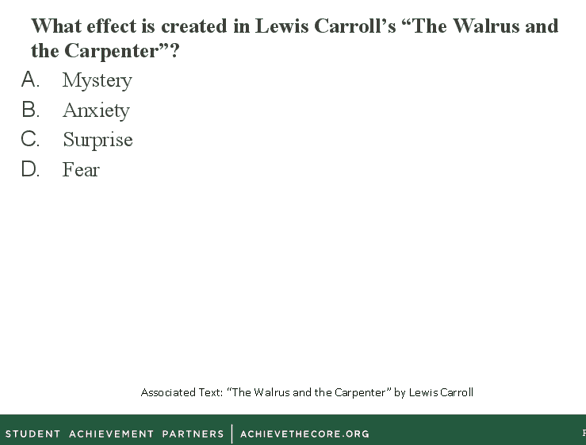As the High School English Language Arts Content Specialist for Jefferson County Public Schools (JCPS) in Louisville, Kentucky, I have been responsible for creating standards-aligned curriculum maps, assessments, and professional development to the teachers in my district.
In an effort to be proactive and prepare myself and my teachers for a transition to a new, standards-aligned assessment, I attended the SAP Core Advocates Elevating Instruction Convening in Colorado this past May. I was fortunate to be able to fill my agenda with all sessions on assessment. I left inspired, way more knowledgeable about building new and more rigorous assessment questions, and armed with information to bring back to the teachers in JCPS to improve our instruction and assessment practices around the Common Core State Standards.
Upon returning from the Colorado convening, I immediately began reworking the summer professional development that I would be providing teachers. Rather than try to create a brand new presentation for my teachers, I decided to present a series of professional development sessions for the teachers: first, the ELA/Literacy Shifts in CCSS Assessment followed by The ELA/Literacy Item Alignment Modules for grades 9-10 and 11-12. In our first training, The ELA/Literacy Shifts in Assessment, we wanted to show teachers how the Shifts they are implementing in the classroom align and apply to assessments. We wanted to show teachers what assessment questions look like “then” and “now.”
This first training reached about sixty teachers in our district. Teachers truly embraced the higher-level questions, noting things like, “I see now how close reading strategies and lessons will increase student achievement with standards.” It was great to see so many teachers engaged in the Shifts in a new way.
We presented the second part of the training, the Assessment Item Alignment Modules, to our PLC leads in September 2016. As we’d done in the previous training, we discussed the relevance of the Shifts and we also looked at assessment items “before” and “after.” For this training, we dove deeply into the grade-level standards to better understand how to assess them. Participants were able to compare questions, by standard, that do and do not fully assess the standards. Through this comparison, they realized that often, they are not actually assessing the full depth of the standards. Slides like the one below, from the grade 9-10 training, showed teachers what it looks like to not push students to the full extent of the standard language.
While slides like this showed teachers how to fully push students to the extent of the standards:
As we had hoped, teachers spent much of the day thinking carefully and deeply about their own assessment practices. They left “inspired to do some standards-based thinking,” and “ready to craft better multiple choice questions that require students to think more critically and that get to the heart of the standards.” An additional benefit that came out of the day was the rich and meaty conversations participants had about how to adjust their classroom questioning to build student knowledge around texts.
At the end of the day of learning, we challenged teachers to do several things:
- Join SAP Core Advocates, a network of educators committed to implementing high-quality educational standards.
- Begin to create questions within their classrooms modeled after those of the SAP mini assessments.
- Administer at least one SAP mini assessment in their class this year and to provide feedback regarding the use of that assessment.
- Be a part of the JCPS team to create new, CCSS-aligned district-based assessments for the next year.
- Be a voice in our state to advocate and demand good, quality assessments that align to the CCSS.
So while this journey began in May, the real work begins now. Teachers are armed with new information regarding CCSS-aligned questions and are excited to be taking it back into their classrooms. As we move forward, I am helping them determine what mini-assessments in the Achieve the Core assessment bank best align to our curriculum maps. I’m also helping them by designing answer sheets for each assessment, so teachers don’t have to print the whole mini-assessment for each student. In December, we will have our first re-convening to talk about the learning, implications, and next steps.



















